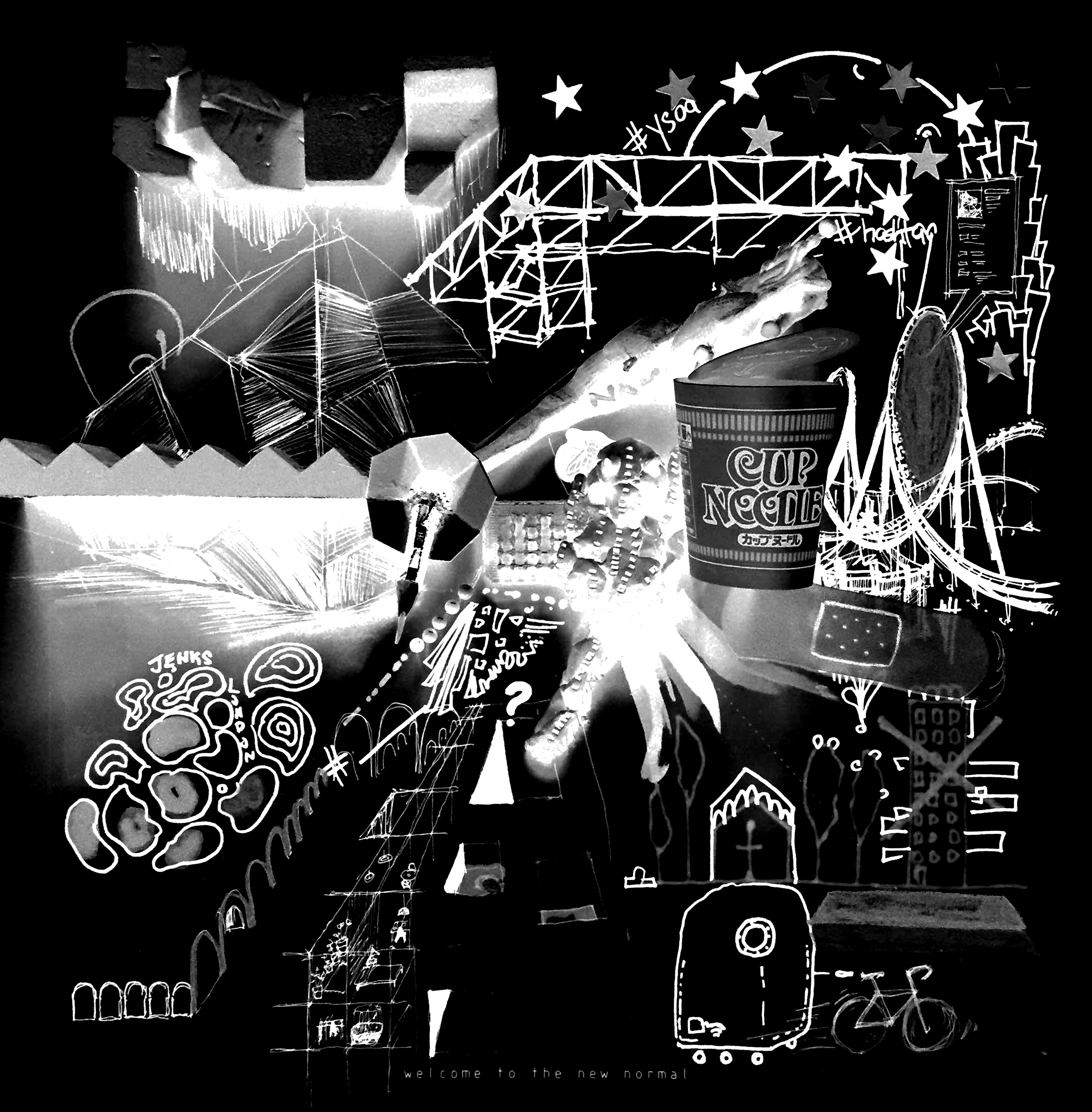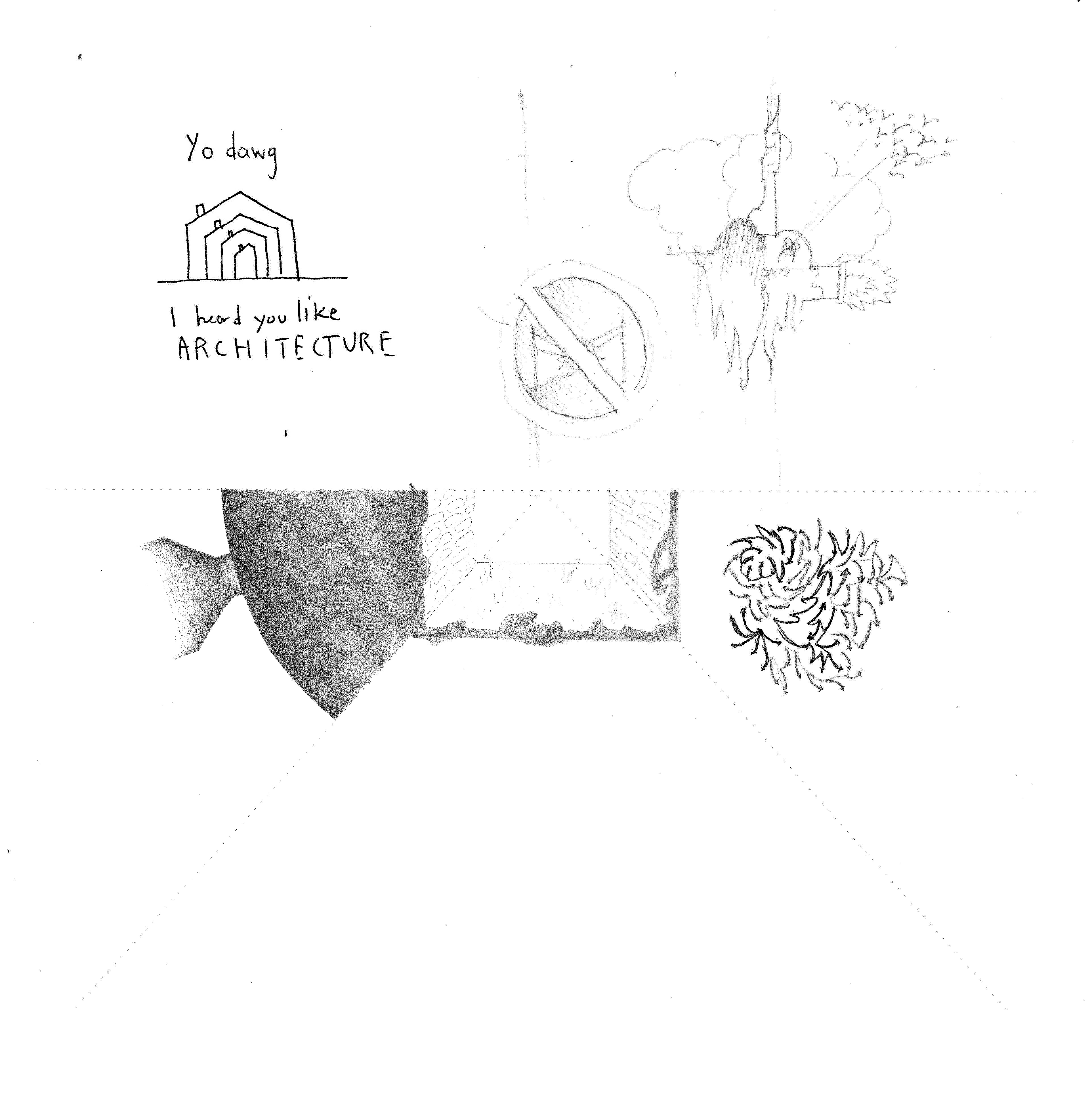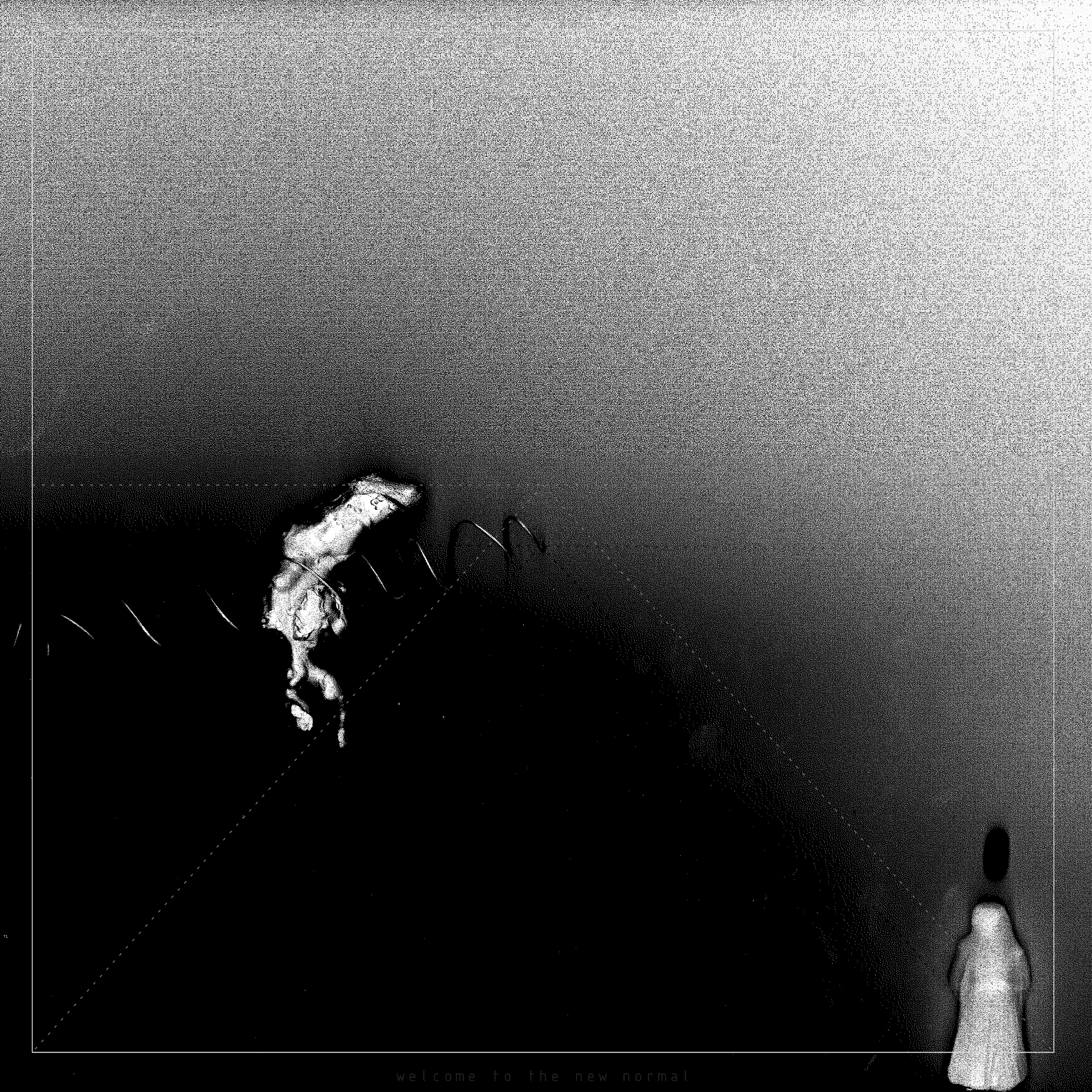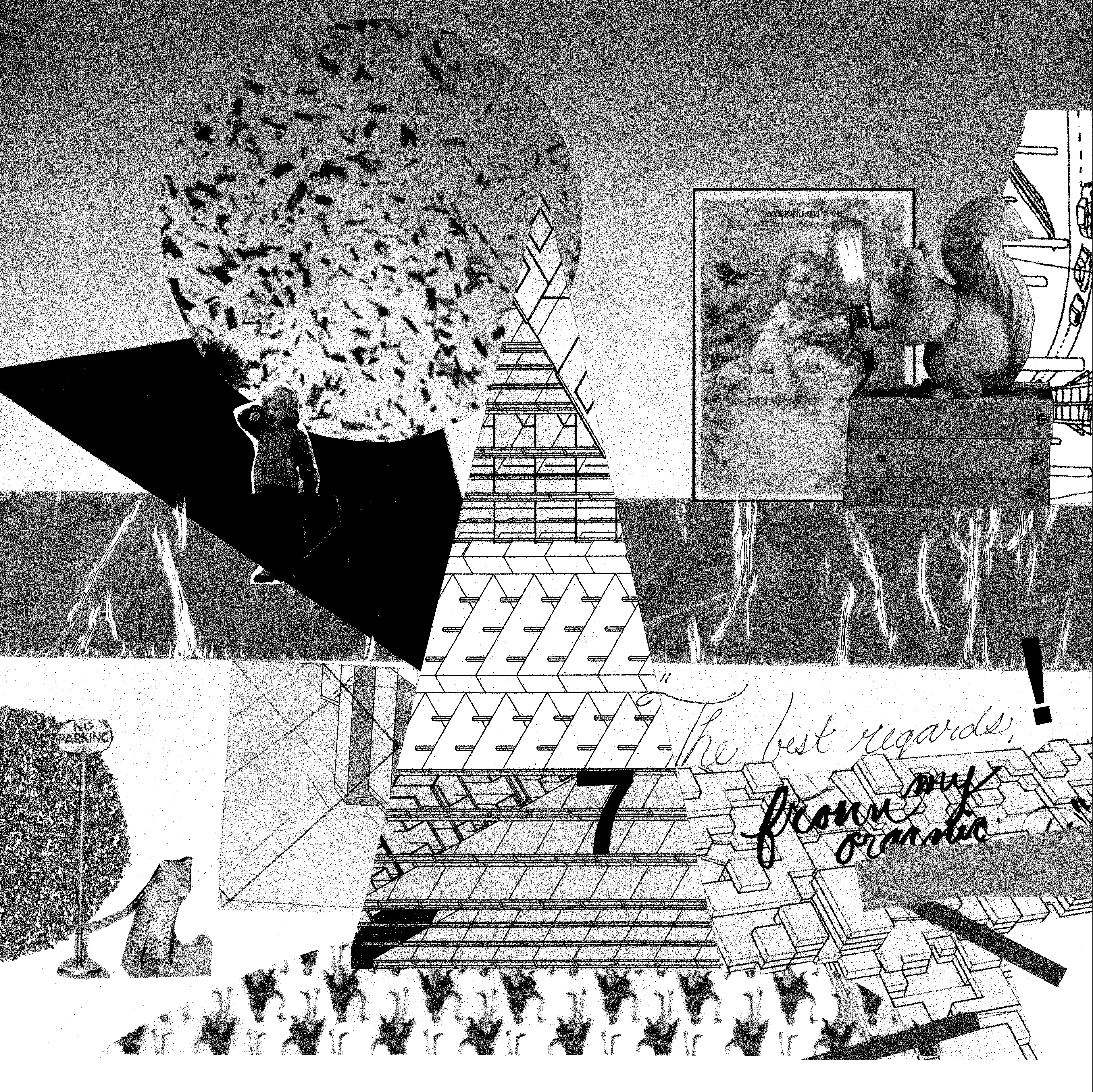Cadavre Exquis: Surry’s review of four exquisite visions
Contributor
The New Normal

4th Floor (3rd Year M. Arch I and 2nd Year M.Arch II)

5th Floor( 2nd Year M.Arch I)

6th Floor( First Year M.Arch I)

7th Floor( First Year MArch II )
11.12.2015
SURRY SCHLABS (PHD)
Paprika! distributed four blank 13” x 13” canvases to each floor of Rudolph Hall to play a game of exquisite corpse with our peers. Each square was labeled “Welcome to the New Normal,” in the hopes that students would make their mark and pass it along to construct an additive vision of what we all see as the new normal. Surry Schlabs muses upon the resulting drawings, offering a reading that reveals a deeper, transcendental motivation behind the exercise.
The Cadavre Exquis, or Exquisite Corpse, was a kind of elaborate parlor game devised and played by many of the early Surrealists, but also by the DADAs, theirs being a period of fairly intense ideological overlap. André Breton is thought to have initiated it, but even if he didn’t, he was most certainly involved in a number of early corpses, as were a number of other important Surrealist figures, including Yves Tanguy, Joan Miró, Marcel Duchamp, and Tristan Tzara. More than a fun, creative way to pass the time – though it certainly was that – its purpose in the context of Surrealist and DADAist art practice was to disrupt conventional notions of order, causality, and narrative; to question conventional standards of beauty and judgment; and to complicate traditional notions of authorship and attribution.
More importantly, however, the Exquisite Corpse put forward a vision of art as essentially, inextricably social in nature. Comprised of distinct, individualized, semi-autonomous artworks, the various panels of the Exquisite Corpse were related, nonetheless, through a mutual contiguity across the boundaries of each panel, thereby providing the appearance of composition in common.
In the context of the school today, of this issue’s theme (“The New Normal”), and of the architecture profession and where it seems to be headed (whether that be down the drain or up the mountain), it’s interesting to note how these drawings here change, or evolve, depending on which floor of the building, which year in the program, is responsible for them – which is to say there seems to be a distinct shift from a tightly focused, highly individualized approach to composition (1st year), to one more clearly based in social collaboration (Post-Pro). In a way, one might also read these works in terms of the apparent decline of the star-architect system, and the subsequent rise of a more thoroughly collaborative, truly pluralistic model of practice; of the shift from a professional model where the work of hundreds, if not thousands, of people can be framed as the work of a lone individual, to one embracing distinctly non-hierarchical models of professional and creative practice, where the very notion of authorship is called into question. Symptoms of such a change are everywhere, I think, from the emergence of the Creative Commons, to any number of individuals and organizations currently questioning the conventions and idiosyncrasies of intellectual property law.
Will “The New Normal” find us abandoning the notion of individual genius in favor of something more collective, pluralistic, and democratic? Will a more thoroughly common approach to architectural and artistic practice hold sway in the future? One can only hope.
The star-architect may be dead, but he sure makes an exquisite corpse.